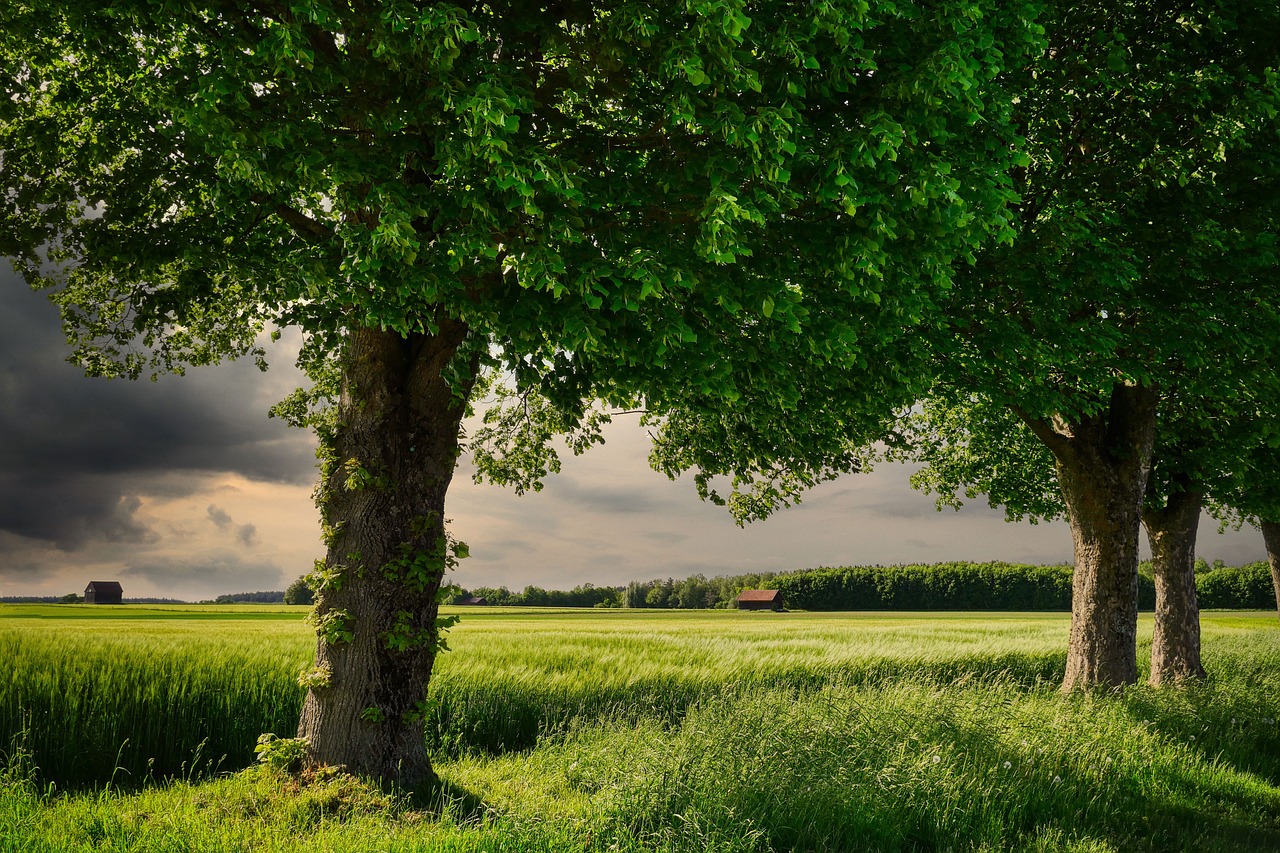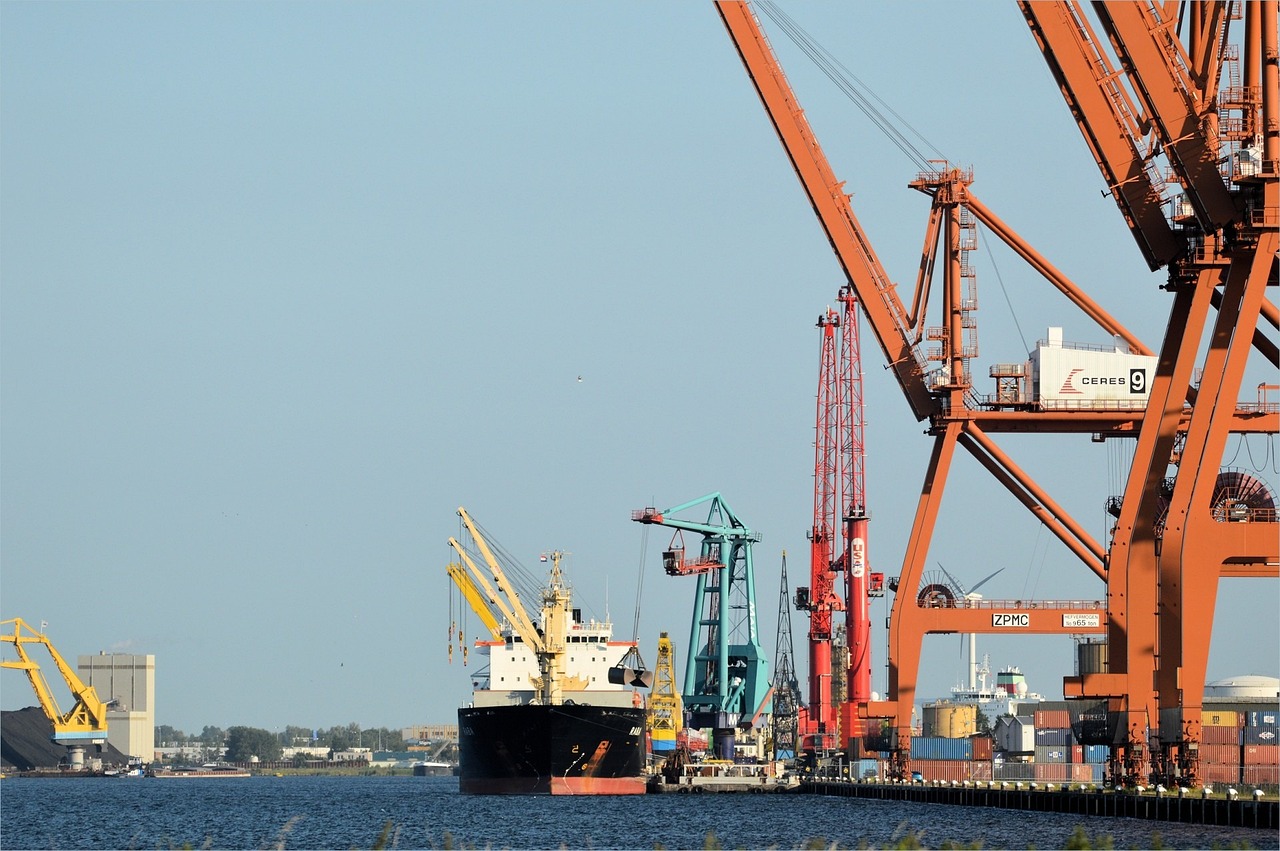Transitioning to a Green Economy: Challenges and Opportunities
The journey toward a sustainable economy is not just a trend; it’s a necessity for our planet's future. As we grapple with the realities of climate change, resource depletion, and environmental degradation, the push for a greener economy has never been more urgent. But what does it really mean to transition to a green economy? It’s about embracing practices that not only reduce our environmental footprint but also promote economic resilience and social equity. This multifaceted journey is filled with both challenges and opportunities that can redefine how we live, work, and interact with our environment.
At its core, a green economy emphasizes sustainable practices that prioritize the health of our planet while fostering economic growth. Unlike traditional economic models that often prioritize short-term gains, a green economy seeks to balance economic activity with ecological integrity. This shift can lead to a plethora of benefits, including cleaner air and water, improved public health, and the creation of new jobs in emerging industries. However, this transition is not without its hurdles. It requires a fundamental rethink of existing systems and practices, which can be daunting for many stakeholders involved.
As we explore the challenges faced in this transition, it's important to recognize that each obstacle can also present an opportunity for innovation and growth. For instance, while financial constraints can limit the implementation of sustainable practices, they also drive the need for creative financing solutions and investment strategies. Similarly, political resistance may highlight the need for greater public awareness and engagement in environmental issues. Understanding these dynamics is crucial for navigating the path toward a greener economy.
In the sections that follow, we will delve deeper into the core principles of a green economy, the key challenges that arise during the transition, and the opportunities for innovation that can propel us forward. By examining the intricate interplay between these elements, we can better appreciate the complexities of this journey and the potential for a more sustainable future.
A green economy is not merely an economic model; it’s a holistic approach to development that integrates environmental sustainability with economic growth. It emphasizes the importance of reducing our ecological footprint while enhancing social equity and quality of life. The principles of a green economy are built on the foundation of sustainable practices, which can include:
- Renewable Energy: Investing in solar, wind, and other renewable sources to reduce dependency on fossil fuels.
- Resource Efficiency: Utilizing resources more efficiently to minimize waste and promote recycling.
- Social Inclusion: Ensuring that the transition benefits all members of society, particularly marginalized communities.
One of the most significant benefits of transitioning to a green economy is the potential for job creation. As new industries emerge, there will be a demand for skilled workers who can drive innovation and implement sustainable practices. This shift not only addresses environmental concerns but also revitalizes local economies and creates new opportunities for entrepreneurship.
In summary, the transition to a green economy is a complex yet rewarding journey. By understanding the principles that underpin this movement, we can better navigate the challenges ahead and seize the opportunities that arise along the way. The road may be long, but the destination—a sustainable and equitable future—is worth the effort.
1. What is a green economy?
A green economy is an economic system that aims to reduce environmental risks and ecological scarcities while promoting sustainable development without degrading the environment.
2. What are the main challenges in transitioning to a green economy?
The main challenges include financial constraints, political resistance, and technological barriers that can impede progress.
3. How does a green economy create jobs?
A green economy creates jobs by fostering new industries and technologies focused on sustainability, leading to opportunities in renewable energy, waste management, and sustainable agriculture.
4. What role do governments play in this transition?
Governments play a crucial role by implementing policies and regulations that support sustainable practices and by providing incentives for businesses and individuals to adopt green technologies.

Understanding the Green Economy
The concept of a green economy revolves around sustainable practices that aim to reduce our environmental footprint while promoting economic growth. It’s like a refreshing breeze cutting through the smog of traditional industrial practices, offering a new way to think about how we interact with our planet. At its core, a green economy seeks to create a harmonious balance between economic development and environmental sustainability. This shift is not just a trend; it's a necessary evolution in how we operate as a society.
So, what are the fundamental principles of a green economy? Well, it emphasizes several key elements:
- Resource Efficiency: Utilizing resources in a way that minimizes waste and maximizes productivity.
- Low Carbon Emissions: Reducing greenhouse gas emissions through cleaner technologies and renewable energy sources.
- Social Inclusion: Ensuring that the benefits of a green economy are shared equitably among all segments of society.
- Natural Capital Preservation: Protecting ecosystems and biodiversity to maintain the natural resources we all depend on.
These principles not only contribute to a healthier planet but also pave the way for a more resilient economy. Unlike traditional economic models that often prioritize short-term gains over long-term sustainability, a green economy encourages investments that yield lasting benefits. Imagine planting a tree today that will provide shade and fruit for generations to come—this is the essence of investing in a green economy.
The benefits of transitioning to a green economy are multifaceted. For one, it can lead to significant cost savings in the long run. By adopting sustainable practices, businesses can reduce their energy consumption and waste, leading to lower operational costs. Additionally, a green economy fosters innovation, as companies are pushed to develop new technologies and services that align with environmental goals. This not only creates new markets but also enhances competitiveness on a global scale.
However, the transition is not without its challenges. The contrast between a green economy and traditional models reveals a complex landscape filled with obstacles and opportunities. Understanding these dynamics is crucial for anyone looking to navigate this transformative journey. It’s like learning to ride a bike; at first, it may seem daunting, but with practice and the right guidance, you can find your balance and enjoy the ride.
In summary, the green economy represents a revolutionary approach to how we conduct business and interact with our environment. By embracing its principles, we can unlock a future that is not only economically viable but also ecologically sound. As we delve deeper into the challenges and opportunities of this transition, it becomes clear that the path to sustainability is paved with both hurdles and potential breakthroughs.

Key Challenges in Transitioning
Transitioning to a green economy is not a walk in the park; it's more like navigating a labyrinth where every turn presents a new challenge. The journey toward sustainability is filled with obstacles that can sometimes feel overwhelming. From financial constraints to political resistance, these challenges can hinder progress and slow down the momentum required for a successful transition.
One of the most pressing issues is financial barriers. Implementing sustainable practices often requires significant investments, which can be a tough pill to swallow for many organizations. Imagine trying to upgrade your home’s insulation to save on energy bills, but the initial costs are so high that you hesitate to move forward. Similarly, businesses face the daunting task of securing funding for green initiatives. They must navigate a complex landscape of grants, loans, and private investments, which can feel like searching for a needle in a haystack.
Funding is crucial for green initiatives, and organizations often find themselves in a bind when it comes to financing their sustainability projects. The initial investment can be substantial, and many companies struggle to justify these costs, especially when the benefits may take years to materialize. It’s like planting a tree; you won’t see the fruit immediately, but with time, the rewards can be plentiful. However, the question remains: how can businesses secure the necessary funds?
There are several potential sources of funding available, including government grants, private equity, and crowdfunding. Yet, even with these options, the competition for financial resources can be fierce. Many businesses find themselves in a race, trying to prove that their green initiatives are worth the investment. This leads us to another critical aspect of the transition: the cost of transition.
Transitioning to a green economy involves upfront costs that can deter businesses from making the leap. Companies often weigh the initial financial burden against the long-term benefits of adopting green practices. It’s akin to deciding whether to buy an electric car; the upfront price tag may be higher, but the savings on fuel and maintenance can add up over time. The challenge lies in convincing stakeholders that the long-term gains will outweigh the immediate costs.
Moreover, the political and regulatory challenges play a significant role in shaping the landscape of the green economy. Government policies can either facilitate or hinder the transition. For instance, favorable legislation can provide incentives for businesses to adopt sustainable practices, while a lack of political will can stall progress. It's like trying to ride a bike uphill; without the right support, it can be an uphill battle.
Legislation is a double-edged sword; it can either pave the way for innovation or create roadblocks. The effectiveness of policies aimed at promoting sustainability often hinges on the political climate. If lawmakers are not on board with green initiatives, it can lead to uncertainty and hesitation among businesses. This uncertainty can stifle innovation and slow down the transition to a greener economy.
In conclusion, while the path to a green economy is fraught with challenges, understanding these obstacles is the first step toward overcoming them. By addressing financial constraints, navigating political landscapes, and recognizing the costs associated with the transition, businesses can better prepare themselves for the journey ahead. It’s a complex puzzle, but with the right strategies, the pieces can come together to create a sustainable future.
- What are the main challenges in transitioning to a green economy?
The main challenges include financial barriers, political resistance, and the costs associated with adopting sustainable practices.
- How can businesses secure funding for green initiatives?
Businesses can explore government grants, private equity, and crowdfunding options to secure funding for their sustainability projects.
- What role does legislation play in the transition to a green economy?
Legislation can either facilitate the transition by providing incentives or hinder it through lack of support and uncertainty.

Financial Barriers
Transitioning to a green economy is not just about adopting new technologies; it’s also about grappling with significant that can make or break a sustainable initiative. Organizations often find themselves at a crossroads, where the desire to implement eco-friendly practices clashes with the harsh realities of funding. Imagine wanting to build a beautiful garden but realizing you don’t have the seeds or tools to get started. This is the dilemma many businesses face when considering green investments.
One of the primary financial challenges is the upfront costs associated with adopting sustainable practices. For instance, renewable energy installations, such as solar panels or wind turbines, can require substantial initial investments. While these technologies promise long-term savings and environmental benefits, the initial financial outlay can deter businesses from making the leap. Additionally, many small and medium-sized enterprises (SMEs) may struggle to find the necessary capital, as traditional banks are often hesitant to finance what they perceive as risky ventures.
To illustrate the financial landscape, consider the following table that highlights the average costs associated with various renewable energy technologies:
| Technology | Average Installation Cost (per MW) | Estimated Payback Period (years) |
|---|---|---|
| Solar Power | $1,000,000 | 5-7 |
| Wind Power | $1,500,000 | 6-8 |
| Geothermal Energy | $2,500,000 | 7-10 |
As the table suggests, while renewable energy technologies can yield significant returns, the initial investment can be daunting. This situation is often compounded by a lack of financial incentives from governments, which can make it even harder for businesses to justify these expenses. However, it’s essential to recognize that there are potential sources of funding available, such as grants, subsidies, and green bonds, which can help alleviate some of these financial burdens.
Another critical aspect of financial barriers is the perception of risk. Investors and stakeholders might view sustainable projects as high-risk ventures, primarily due to their relatively new presence in the market. This perception can lead to a vicious cycle where businesses find it challenging to secure funding, which in turn limits their ability to innovate and grow sustainably. It’s akin to trying to sell ice cream in the winter; if no one believes there’s a market for it, you’ll struggle to find customers.
In conclusion, while the financial barriers to transitioning to a green economy are significant, they are not insurmountable. By understanding these challenges and exploring diverse funding avenues, organizations can begin to pave the way toward a more sustainable future. The journey may be fraught with obstacles, but the rewards—both financial and environmental—are well worth the effort. As we continue to push for greener practices, it’s crucial to foster a culture of innovation and collaboration to overcome these financial hurdles.

Investment in Renewable Energy
When we talk about transitioning to a green economy, one of the most crucial elements is the . This sector is not just about saving the planet; it's about creating a sustainable future that benefits everyone. However, the journey to secure adequate funding for renewable energy projects is often fraught with challenges. Imagine trying to build a house without having the right materials—this is what many organizations face when they lack the necessary financial backing for green initiatives.
Investments in renewable energy technologies are essential for reducing our reliance on fossil fuels and minimizing carbon emissions. The current landscape reveals a growing interest in solar, wind, and other renewable sources, but attracting both public and private funding remains a significant hurdle. For instance, many investors are still hesitant due to perceived risks and the long payback periods associated with such projects. It's like trying to convince someone to buy a ticket to a concert when they aren't sure if the band is any good!
To give you a clearer picture, let’s look at some of the key factors influencing investment in renewable energy:
| Factor | Description |
|---|---|
| Government Incentives | Policies and subsidies that encourage investment in renewable energy projects. |
| Market Demand | The increasing consumer preference for sustainable energy sources. |
| Technological Advancements | Innovations that reduce the costs of renewable technologies, making them more attractive to investors. |
| Public Awareness | Growing knowledge about climate change and the importance of sustainability driving investment. |
Despite these factors, the cost of transitioning to renewable energy can be daunting. Initial investments may seem overwhelming, especially for small businesses or startups that are already operating on tight budgets. However, it’s essential to view these costs not just as expenses but as long-term investments with the potential for significant returns. Think of it like planting a tree; the initial effort may be substantial, but with time and care, it can provide shade and fruit for generations to come.
Furthermore, the global shift towards sustainability is fostering a competitive market for renewable energy. As more companies recognize the benefits of investing in green technologies, we can expect to see an increase in innovation and efficiency. This not only helps in reducing costs but also opens up new avenues for job creation and economic growth. The potential for profit in this sector is enormous, which is why now is the time for investors to get on board. After all, the future is bright for those who choose to invest in a greener tomorrow!

Cost of Transition
Transitioning to a green economy is not just a noble endeavor; it comes with its own set of financial challenges that can feel like a hefty toll on businesses. Imagine trying to climb a mountain where the view from the top is breathtaking, but the path is rocky and steep. That's how many organizations feel when they consider adopting sustainable practices. The upfront costs associated with green technologies, renewable energy installations, and eco-friendly materials can be daunting. For many businesses, these initial investments can seem like a leap of faith into the unknown.
However, it's essential to look beyond the immediate financial burden. Investing in sustainable practices can lead to significant long-term savings. For instance, companies that switch to energy-efficient systems often see a reduction in their utility bills, which can offset the initial costs over time. Additionally, adopting green practices can enhance a company's brand image, attracting eco-conscious consumers and potentially leading to increased sales. The challenge lies in balancing these immediate costs with the long-term benefits.
To better illustrate the financial implications of transitioning to a green economy, consider the following table that outlines common costs associated with this transition:
| Cost Category | Description | Estimated Cost Range |
|---|---|---|
| Renewable Energy Installation | Costs for solar panels, wind turbines, etc. | $10,000 - $100,000+ |
| Energy Efficiency Upgrades | Upgrading HVAC systems, insulation, etc. | $5,000 - $50,000 |
| Sustainable Materials | Switching to eco-friendly materials in production. | $2,000 - $20,000 |
| Training and Development | Training staff on new sustainable practices. | $1,000 - $10,000 |
While these costs can seem overwhelming, they are often necessary investments for a sustainable future. Moreover, businesses can explore various funding options to mitigate these expenses. Government grants, tax incentives, and private investments can provide the financial support needed to make this transition smoother. In essence, while the may pose a challenge, it also represents a critical step towards a more sustainable and profitable future.
- What are the main costs associated with transitioning to a green economy?
Common costs include renewable energy installations, energy efficiency upgrades, sustainable materials, and training for employees. - Are there financial incentives available for businesses going green?
Yes, many governments offer grants, tax credits, and subsidies to encourage businesses to adopt sustainable practices. - How can businesses justify the initial costs of going green?
Businesses can highlight long-term savings on energy bills, improved brand reputation, and potential increases in customer loyalty as justifications for the initial investment.

Political and Regulatory Challenges
Transitioning to a green economy is not just about adopting new technologies or changing business practices; it is also heavily influenced by political and regulatory frameworks. These frameworks can either act as a catalyst for change or serve as significant roadblocks. One of the primary challenges lies in the inconsistency of policies. Different governments may have varying levels of commitment to sustainability, leading to a patchwork of regulations that can confuse businesses and hinder progress. Imagine trying to navigate a maze where every turn presents a different set of rules—this is often how organizations feel when dealing with fluctuating environmental policies.
Moreover, the political will to implement green policies can be influenced by numerous factors, including economic pressures, lobbying from traditional industries, and public opinion. For instance, fossil fuel industries often hold significant sway over political decisions, making it challenging to push for regulations that favor renewable energy. This creates a catch-22 situation: while there may be a growing demand for greener practices from the public, the political landscape may not align with these demands, making it tough for initiatives to gain traction.
Another aspect to consider is the regulatory complexity. In many regions, businesses face a myriad of regulations that they must comply with, which can be overwhelming. For example, companies may need to navigate local, state, and federal regulations, each with its own set of requirements. This complexity can lead to increased costs and confusion, often deterring businesses from pursuing sustainable practices. A streamlined regulatory approach could alleviate some of these burdens, but achieving consensus among various stakeholders is a daunting task.
To illustrate the impact of political and regulatory challenges, consider the following table that outlines some common barriers faced by businesses:
| Barrier | Description |
|---|---|
| Inconsistent Policies | Varying regulations across regions create confusion and hinder progress. |
| Lobbying by Traditional Industries | Influence of fossil fuel and other non-renewable sectors can slow down green initiatives. |
| Regulatory Complexity | Multiple layers of regulations can overwhelm businesses, leading to compliance issues. |
In summary, the political and regulatory landscape plays a pivotal role in shaping the path toward a green economy. While there are undeniable challenges, understanding these obstacles is the first step toward overcoming them. By fostering collaboration between governments, businesses, and communities, we can create a more conducive environment for sustainable practices to flourish.
As we consider these challenges, it’s important to remember that change is possible. Engaging in dialogue, advocating for clear policies, and building coalitions can help pave the way for a greener future. After all, the transition to a sustainable economy is not just a responsibility; it is an opportunity for innovation and growth.
- What are the main political challenges in transitioning to a green economy?
The main challenges include inconsistent policies, lobbying from traditional industries, and regulatory complexity. - How can businesses navigate regulatory challenges?
Businesses can engage with policymakers, seek legal counsel, and participate in industry groups to stay informed and influence regulations. - What role does public opinion play in shaping green policies?
Public demand for sustainable practices can drive political will and lead to more robust green policies.

Opportunities for Innovation
The transition to a green economy isn't just a challenge; it's a treasure trove of and entrepreneurship. As businesses and governments pivot towards sustainability, they are not only addressing environmental concerns but also uncovering new avenues for growth and development. Imagine a world where every challenge faced in this transition becomes a stepping stone for groundbreaking solutions. This is the essence of innovation in a green economy.
One of the most exciting aspects of this shift is the rise of green technologies. These are not just buzzwords; they represent real advancements that can transform our daily lives and industries. From solar panels that harness the sun's energy to electric vehicles that reduce our reliance on fossil fuels, the innovations are plentiful. Companies are racing to develop technologies that not only meet the growing demand for sustainability but also offer competitive advantages in the marketplace. For instance, advancements in battery technology are paving the way for more efficient energy storage solutions, which are crucial for maximizing the use of renewable energy sources.
Moreover, the green economy is a breeding ground for job creation. As new industries emerge, so do new job opportunities that require a diverse set of skills. From engineers specializing in renewable energy systems to data analysts who optimize resource management, the workforce will need to adapt and evolve. This shift also opens doors for educational institutions to innovate their curricula, ensuring that the future workforce is equipped with the necessary skills to thrive in a green economy. In fact, a recent study showed that green jobs are projected to grow significantly over the next decade, outpacing traditional job growth rates. Here’s a quick overview of some of the emerging job roles in the green sector:
| Job Role | Description | Skills Required |
|---|---|---|
| Renewable Energy Engineer | Designs and develops renewable energy systems. | Engineering, project management, sustainability knowledge |
| Sustainability Consultant | Advises businesses on sustainable practices. | Analytical skills, communication, environmental science |
| Green Construction Manager | Oversees construction projects with eco-friendly practices. | Project management, knowledge of green materials, budgeting |
In addition to job creation, the green economy stimulates entrepreneurship. Startups focused on sustainable products and services are sprouting up everywhere, driven by consumer demand for eco-friendly options. Whether it's a company producing biodegradable packaging or a tech startup developing software for energy efficiency, the potential for innovation is limitless. Furthermore, governments and investors are increasingly providing funding and support for these green ventures, recognizing their importance in achieving long-term sustainability goals.
Ultimately, the transition to a green economy is not merely about reducing our carbon footprint; it’s about reimagining our future. It’s about harnessing the power of innovation to create a resilient, sustainable world. As we embrace these opportunities, we must also remember that collaboration is key. By working together—businesses, governments, and communities—we can drive the change needed to build a brighter, greener future.
- What is a green economy? A green economy is one that prioritizes sustainable practices to reduce environmental impact while promoting economic growth.
- How can businesses benefit from transitioning to a green economy? Businesses can benefit through cost savings, improved brand reputation, and access to new markets.
- What types of jobs are emerging in the green economy? Jobs in renewable energy, sustainability consulting, and green construction are among the many roles being created.

Green Technology Development
As we navigate the winding road toward a sustainable future, stands out as a beacon of hope and innovation. This burgeoning field encompasses a wide array of technologies designed to minimize environmental impact while maximizing efficiency and productivity. Imagine a world where energy is harnessed from the sun, wind, and water, powering our homes and industries without depleting natural resources. This vision is not just a dream; it's becoming a reality thanks to advancements in green technologies.
At the heart of this transformation are several key innovations that are reshaping industries and redefining our relationship with the environment. From solar panels that convert sunlight into electricity to wind turbines that capture the power of the breeze, these technologies are paving the way for a cleaner, greener economy. But what exactly does this entail?
Green technology can be categorized into several domains, each playing a crucial role in reducing our carbon footprint:
- Renewable Energy Sources: Harnessing energy from natural processes that are replenished constantly, such as solar, wind, and hydroelectric power.
- Energy Efficiency: Innovations that enhance energy use in buildings, vehicles, and machinery, ensuring less waste and lower emissions.
- Sustainable Agriculture: Technologies that promote farming practices which are environmentally friendly and resource-efficient, such as precision agriculture and organic farming.
- Waste Management Solutions: Advanced recycling and waste-to-energy technologies that minimize landfill use and promote the circular economy.
These innovations not only address environmental concerns but also open up new markets and opportunities for businesses. For instance, the global market for renewable energy is projected to grow significantly, driven by the increasing demand for cleaner energy sources. Companies that invest in green technology are not only contributing to a sustainable future but are also positioning themselves competitively in an evolving marketplace.
However, the journey is not without its challenges. The development of green technologies often requires substantial investment and research. Many startups and established companies alike face hurdles in securing the necessary funding to bring their ideas to fruition. Moreover, the rapid pace of technological change means businesses must stay agile, adapting to new innovations and shifting consumer preferences.
To illustrate the impact of green technology development, consider the following table that highlights some key advancements and their potential benefits:
| Technology | Description | Benefits |
|---|---|---|
| Solar Panels | Devices that convert sunlight into electricity. | Reduces electricity bills, lowers carbon emissions. |
| Wind Turbines | Machines that convert wind energy into mechanical power. | Provides clean energy, reduces reliance on fossil fuels. |
| Electric Vehicles (EVs) | Vehicles powered by electricity instead of gasoline. | Lower emissions, reduced fuel costs, and less air pollution. |
| Smart Grids | Electricity supply networks that use digital technology. | Improves efficiency, reduces outages, integrates renewable sources. |
In conclusion, the development of green technology is not just a trend; it's a crucial component of our transition to a sustainable economy. By embracing these innovations, we can tackle pressing environmental issues while creating a wealth of opportunities for businesses and communities alike. The key lies in collaboration—governments, businesses, and individuals must work together to foster an ecosystem that encourages innovation and sustainability. The future is bright, and with green technology leading the charge, we can look forward to a cleaner, greener world.
Q1: What is green technology?
A1: Green technology refers to products, services, and systems that use renewable materials and energy sources, reduce emissions and waste, and have a positive impact on the environment.
Q2: How does green technology benefit the economy?
A2: Green technology can create jobs, stimulate economic growth, and reduce energy costs, making it a vital component of a sustainable economy.
Q3: What are some examples of green technology?
A3: Examples include solar panels, wind turbines, electric vehicles, and smart grids, all of which contribute to reducing environmental impact.
Q4: What challenges does green technology development face?
A4: Challenges include securing funding, keeping pace with rapid technological advancements, and overcoming regulatory hurdles.

Job Creation in the Green Sector
Transitioning to a green economy is not just a lofty ideal; it is a practical shift that promises to reshape our job market in exciting ways. As we pivot toward sustainable practices, the demand for a skilled workforce in the green sector is skyrocketing. This shift is akin to discovering a new gold rush, where the 'gold' is a cleaner planet and a more sustainable way of living. But what does this mean for job seekers and industries alike?
First, let's explore the types of jobs that are emerging in this vibrant sector. From renewable energy engineers to sustainability consultants, the landscape is rich with opportunities. For instance, a significant number of roles are being created in the fields of solar and wind energy, where technicians and project managers are essential for the installation and maintenance of these technologies. Moreover, the rise of electric vehicles (EVs) is generating a surge in demand for skilled workers in manufacturing, charging infrastructure, and battery recycling.
Additionally, the green sector is not limited to traditional roles; it also encourages innovation and entrepreneurship. Many startups are sprouting up, focusing on eco-friendly products and services. This entrepreneurial spirit is fostering new job categories that didn’t exist a decade ago, such as carbon footprint analysts and green product designers. Imagine being at the forefront of creating sustainable packaging solutions or developing apps that help consumers make environmentally-friendly choices. The possibilities are endless!
However, it’s crucial to note that the transition to a green economy requires a workforce equipped with the right skills. Educational institutions and training programs are stepping up to meet this demand. Many universities are now offering specialized courses in environmental science, renewable energy, and sustainable business practices. This educational shift ensures that job seekers are not just filling positions but are also prepared to innovate and lead in this new green landscape.
Furthermore, the potential for job creation in the green sector is not just limited to high-tech roles. The transition will also create a wealth of opportunities in areas like construction, agriculture, and waste management. For example, green construction jobs focus on building energy-efficient structures, while sustainable agriculture roles aim to implement eco-friendly farming practices. This diversification means that individuals from various backgrounds can find a place in the green economy.
To illustrate the potential impact of job creation in the green sector, consider the following table:
| Sector | Job Roles | Projected Growth Rate |
|---|---|---|
| Renewable Energy | Solar Technicians, Wind Turbine Technicians | 20% by 2026 |
| Sustainable Agriculture | Organic Farmers, Agricultural Technicians | 15% by 2026 |
| Green Construction | LEED Certified Builders, Energy Auditors | 25% by 2026 |
| Waste Management | Recycling Coordinators, Waste Reduction Specialists | 10% by 2026 |
In conclusion, the transition to a green economy is paving the way for a plethora of job opportunities across various sectors. As we embrace sustainability, we not only contribute to a healthier planet but also create a vibrant job market that caters to a wide range of skills and interests. The future is bright for those willing to step into the green sector, and it's an exciting time to be part of this transformative journey.
- What types of jobs are available in the green sector? There are roles in renewable energy, sustainable agriculture, green construction, and waste management, among others.
- How can I prepare for a job in the green economy? Consider pursuing courses in environmental science, renewable energy, or sustainable business practices to gain relevant skills.
- Is the green sector growing? Yes, the green sector is experiencing significant growth, with many job roles projected to expand rapidly in the coming years.
- What skills are in demand in the green economy? Skills in technology, project management, and sustainability practices are highly sought after in the green sector.
Frequently Asked Questions
- What is a green economy?
A green economy is an economic system that aims to reduce environmental risks and ecological scarcities while promoting sustainable development without degrading the environment. It focuses on practices that enhance sustainability and minimize carbon footprints.
- What are the main challenges in transitioning to a green economy?
Transitioning to a green economy faces several hurdles, including financial constraints, political resistance, and technological barriers. These challenges can stall progress and make it difficult for businesses to adopt sustainable practices.
- How does financial investment impact the green economy?
Financial investment is crucial for the success of green initiatives. Without adequate funding, organizations struggle to implement sustainable practices. This includes securing investments in renewable energy technologies and overcoming the initial costs associated with transitioning.
- What role does government policy play in the green economy?
Government policies are vital in shaping the green economy. Effective legislation can facilitate the transition by providing incentives for sustainable practices, while lack of political will can hinder progress.
- What opportunities arise from transitioning to a green economy?
The shift to a green economy opens up numerous opportunities for innovation and entrepreneurship. Businesses can leverage sustainable practices to gain a competitive edge, leading to the development of new technologies and services that promote environmental sustainability.
- What types of jobs are created in the green sector?
The green sector is expected to create a variety of new job opportunities, ranging from renewable energy technicians to sustainability consultants. As the economy transitions, there will be a growing demand for skilled workers who can support sustainable practices.
- How can businesses overcome financial barriers in transitioning?
Businesses can explore various funding sources, such as government grants, private investments, and partnerships with green organizations. Additionally, demonstrating the long-term benefits of sustainable practices can help secure necessary funding.
- What are some examples of green technologies?
Examples of green technologies include solar panels, wind turbines, electric vehicles, and energy-efficient appliances. These innovations play a significant role in reducing environmental impact and fostering a sustainable economy.


















